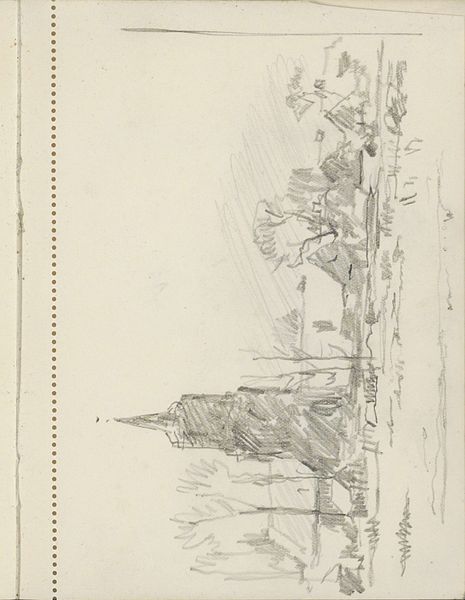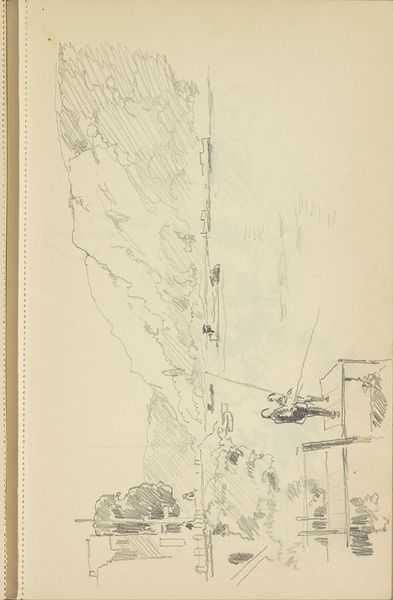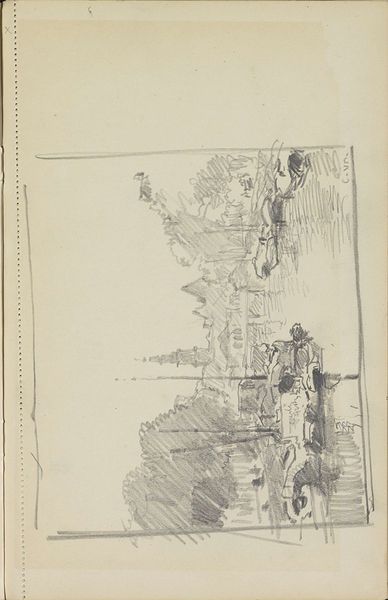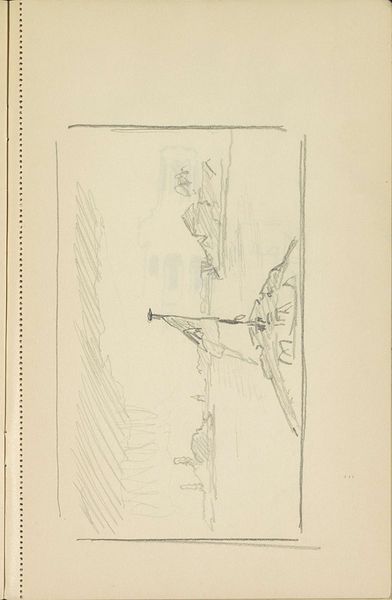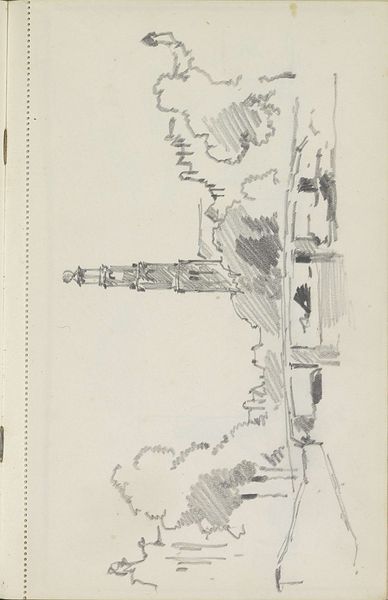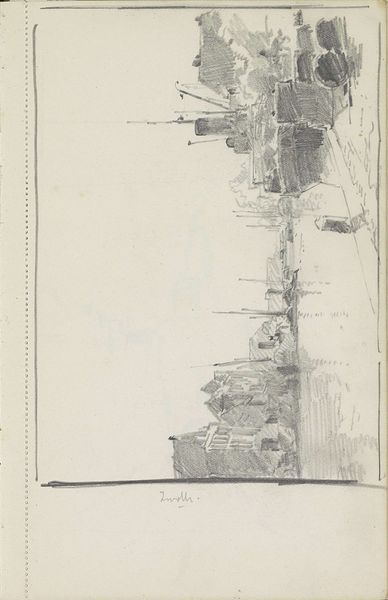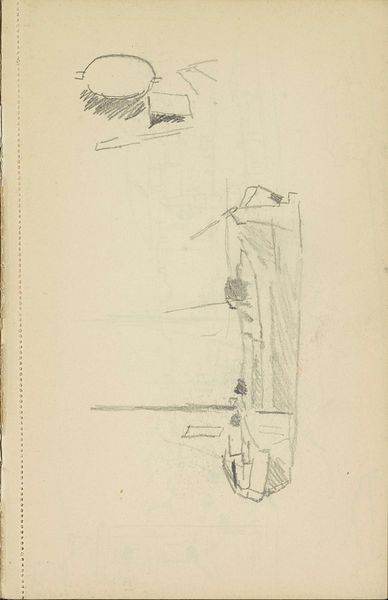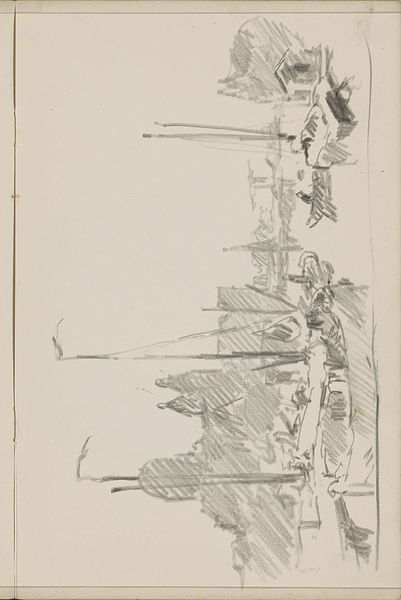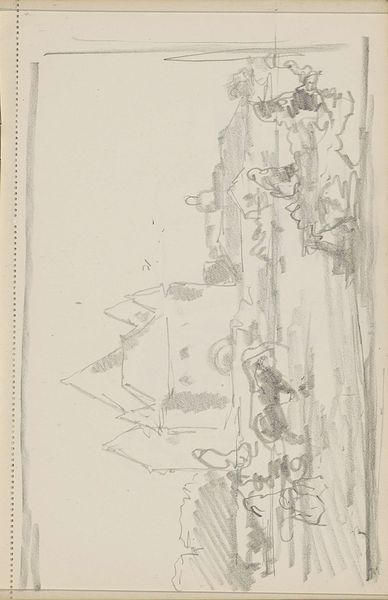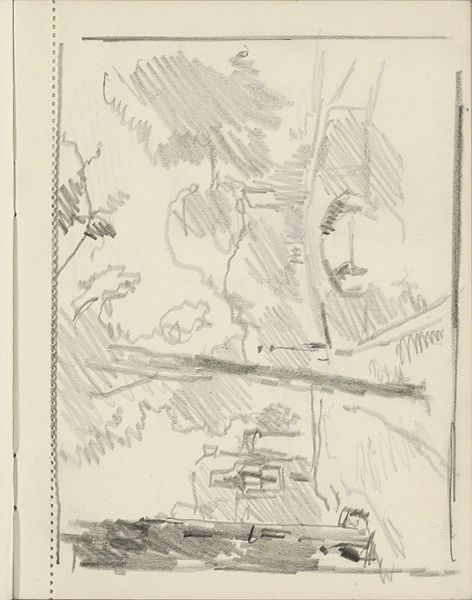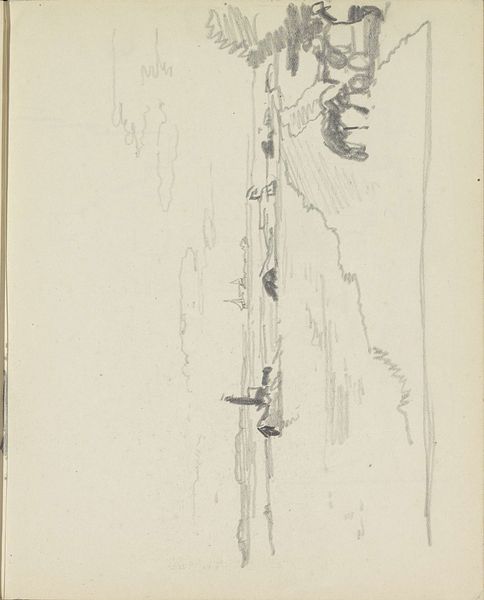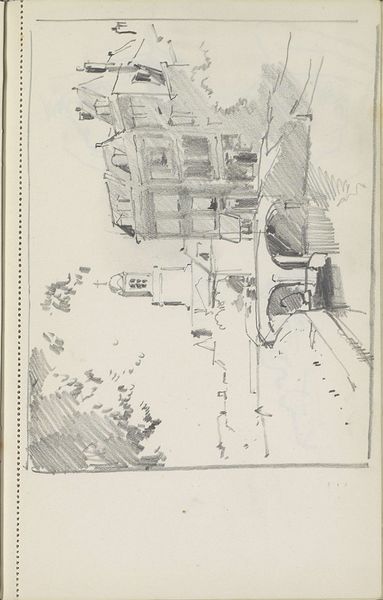
drawing, pencil
#
drawing
#
landscape
#
pencil
#
realism
Copyright: Rijks Museum: Open Domain
Editor: Here we have Cornelis Vreedenburgh's pencil drawing, "Weiland met twee jongens bij een ezel," made sometime between 1890 and 1946. The hazy quality makes me wonder if this image represents memory and longing more than reality. What stands out to you? Curator: I see a direct engagement with themes of labor and social class. It's crucial to look at images like this through a lens that acknowledges how pastoral scenes often romanticize rural life while obscuring the harsh realities of agricultural work and the exploitation of working-class individuals, especially children. The donkey itself is a symbol loaded with connotations of burden and servitude. How might the presence of the boys alongside this animal speak to the expectations placed upon them, to enter the workforce at a young age? Editor: So you see the idyllic scene as a way to mask social issues? It also prompts reflection on how these systems have shifted over time and what continues to linger today? Curator: Exactly. What seems like a simple scene of boys with a donkey becomes a poignant commentary. How does this artwork make you think about access to green spaces and class? Does it make you consider issues of environmental justice, and who gets to experience and enjoy the countryside? Consider too that the dates the artwork may have been produced align to some significant events for farmers. Editor: That's given me a lot to consider, especially how seemingly gentle images can contain such powerful subtexts about labor, access, and societal roles. It changes the way I look at it entirely! Curator: Indeed! The role of art is not just to represent but to provoke questions about the world around us. Always consider the silences within art!
Comments
No comments
Be the first to comment and join the conversation on the ultimate creative platform.
